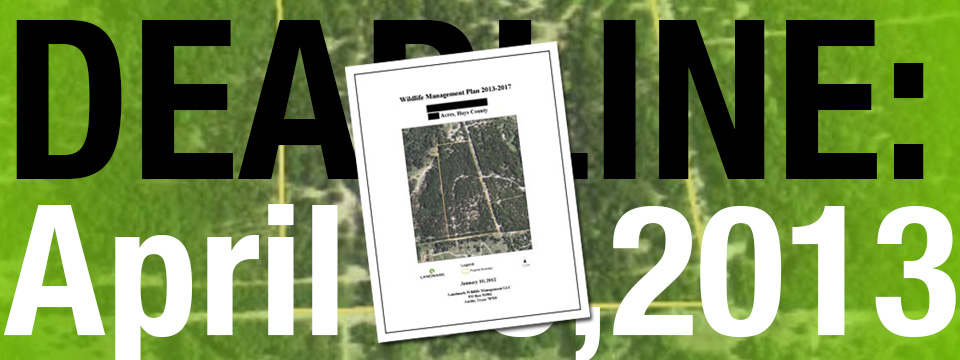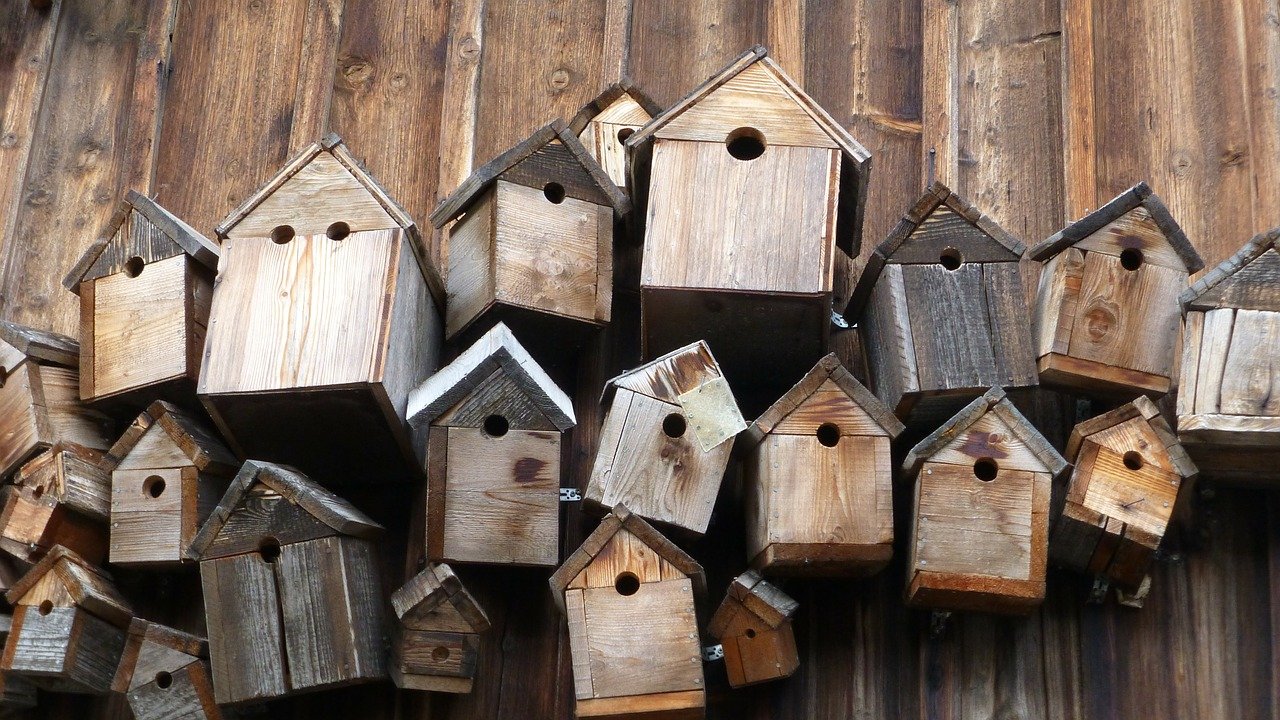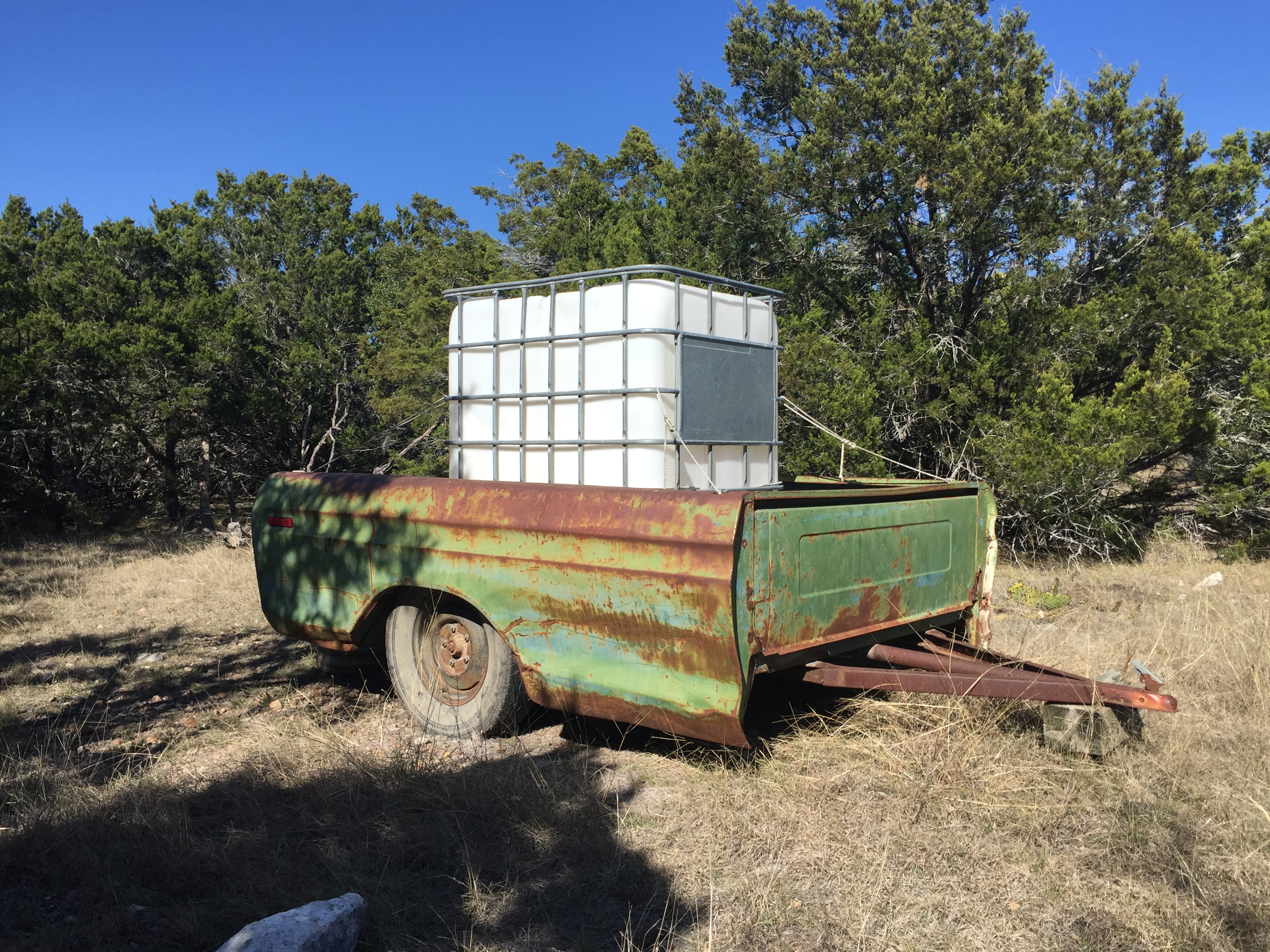The deadline to file new wildlife management plans is April 30, 2013. Landowners needing to submit new applications include those who wish to convert their property to wildlife management in 2013, those who purchased their property in 2012, and those who were asked to reapply by their appraisal districts.
Luckily, we still have time to draft and file your 2013 wildlife exemption plan. We’re happy to help you beat the deadline!









